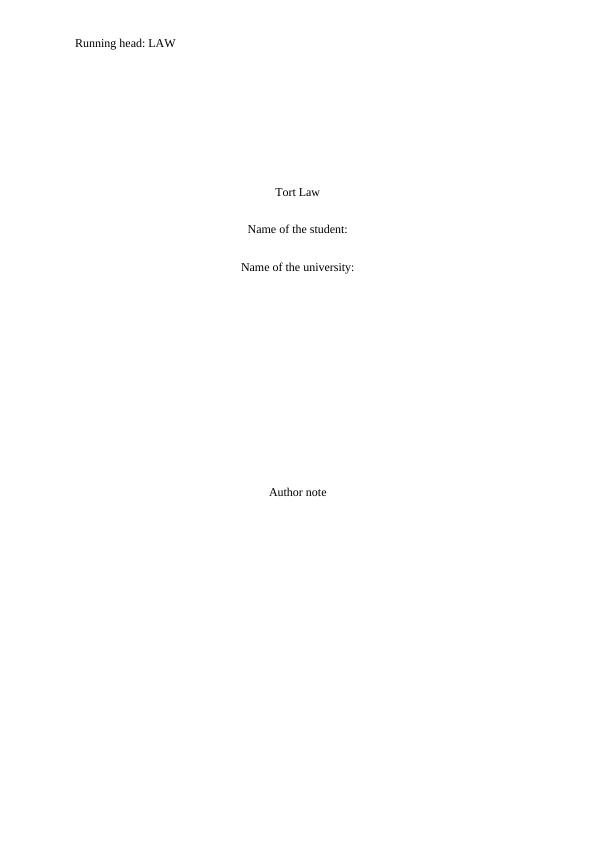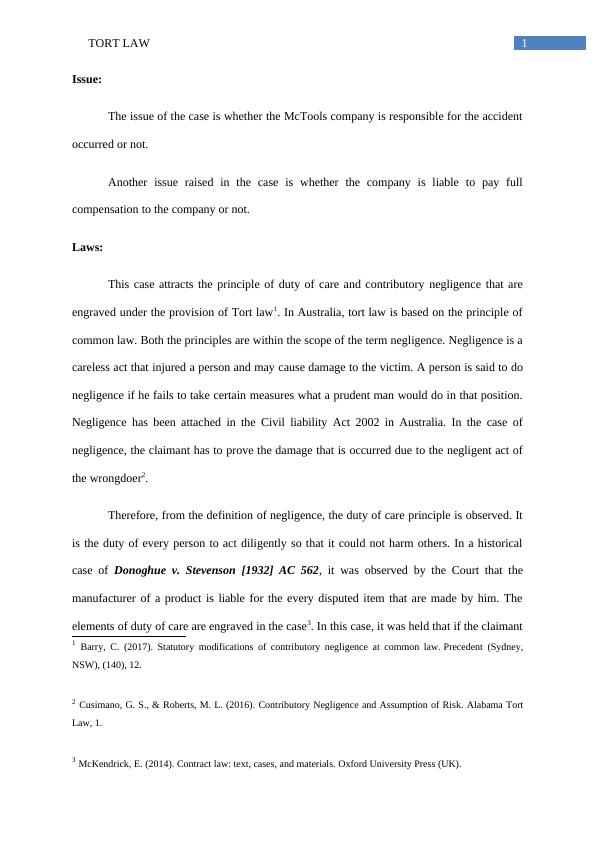LLB 240 - Tort Law - McTools company Case
7 Pages1395 Words22 Views
University Of Wollongong
law of torts (LLB 240)
Added on 2020-03-01
About This Document
In this assignment, we will discuss the same principle of duty of care and discuss whether contributory negligence would applicable. Aurora, the victim, had failed to follow the instructions properly and suffered from a serious eye injury. Therefore, the law to claim full compensation from the company bars her and the observation of the case of Mak Woon King will be applied. It was her duty to take possible care to avoid any harm. However, she failed and the principle of contributory negligence would be injected here.
LLB 240 - Tort Law - McTools company Case
University Of Wollongong
law of torts (LLB 240)
Added on 2020-03-01
ShareRelated Documents
End of preview
Want to access all the pages? Upload your documents or become a member.
Business Law Assignment 2018: Potential Plaintiffs in Case of Negligence
|5
|1227
|254
Case Study about the Business Law 2022
|7
|994
|16
English Tort Law Assignment
|9
|2899
|81
LW651- The Australian Consumer Law - MacTools Ltd Tort Law
|6
|1332
|82
LLB 240 - McTools Ltd - Case Study
|6
|1511
|39
Case on Claim of Negligence
|11
|2433
|55



